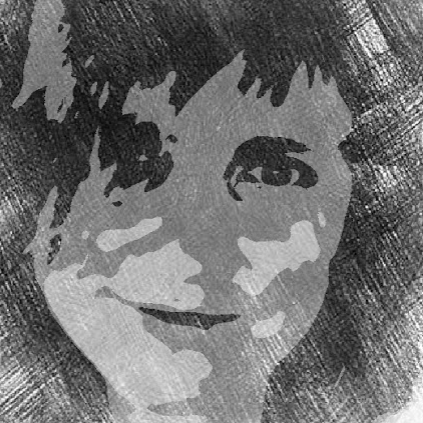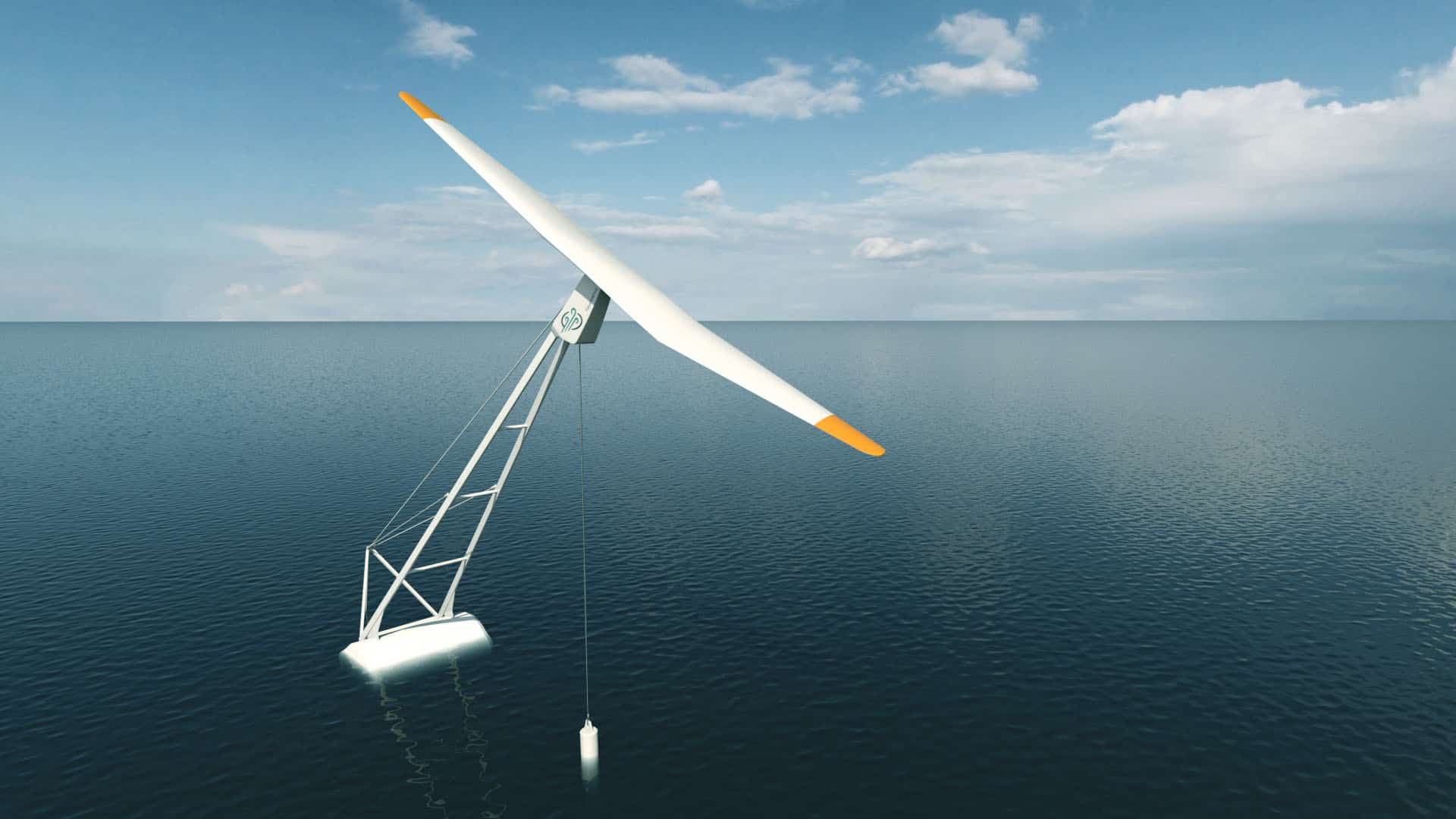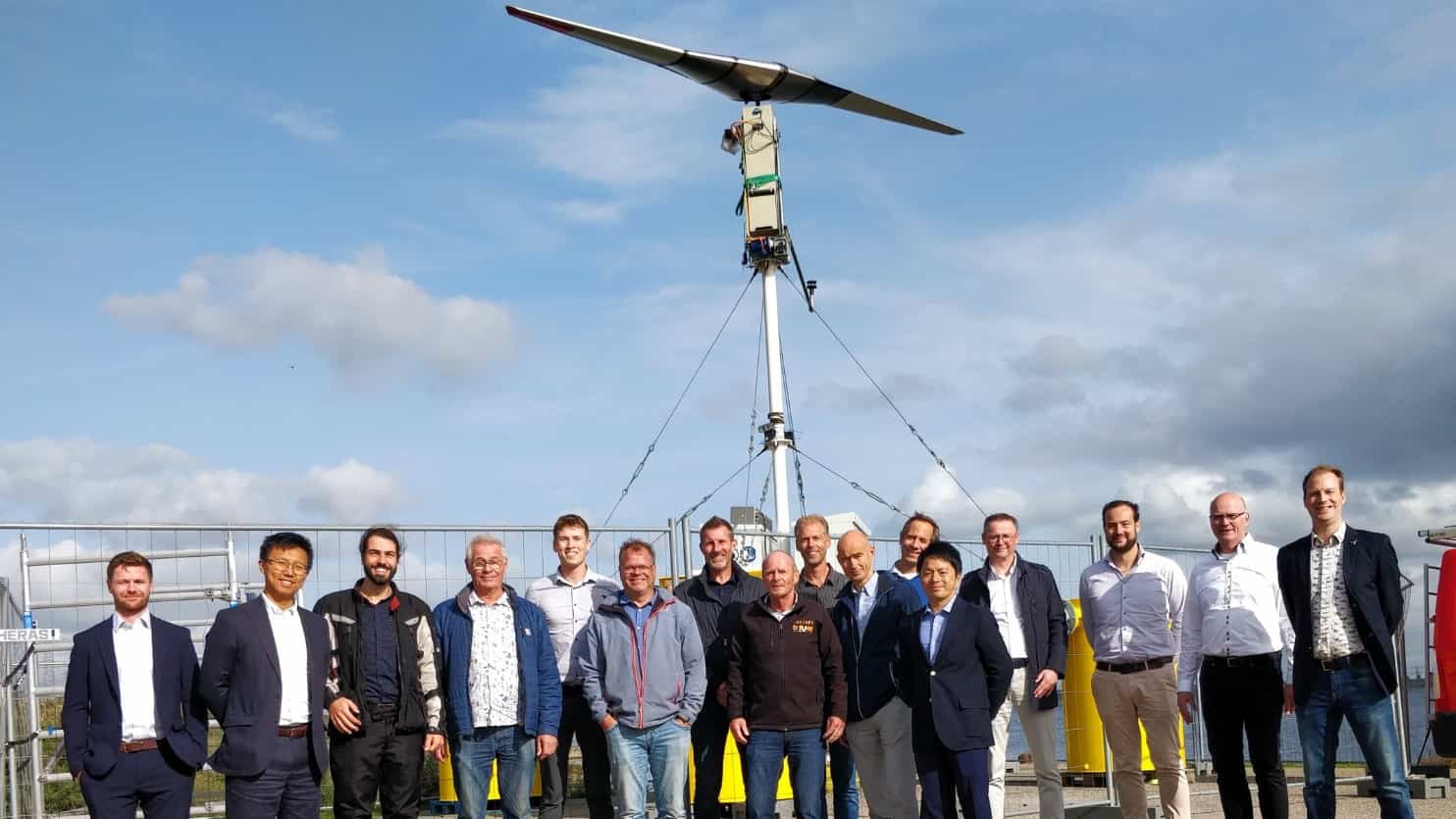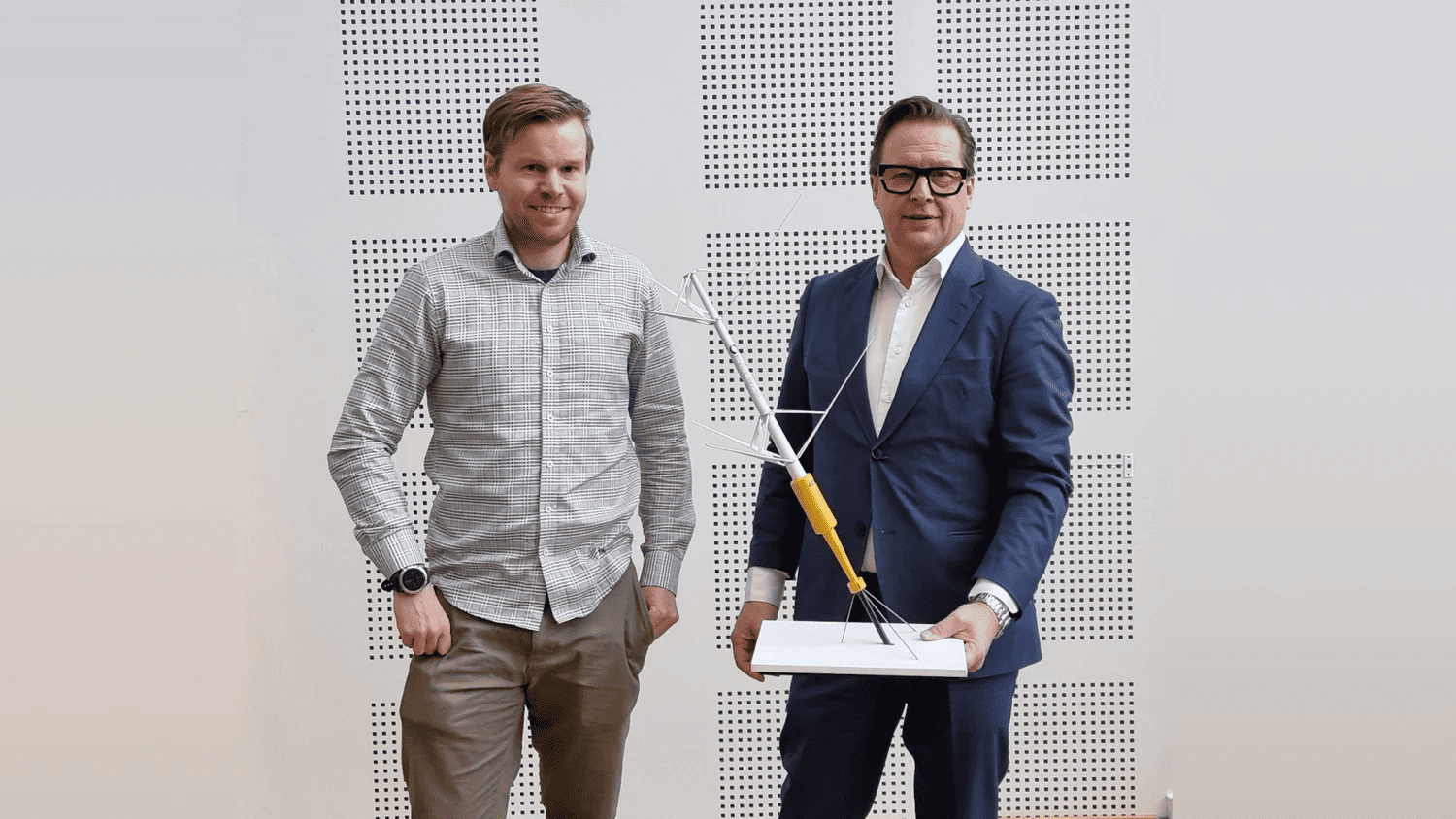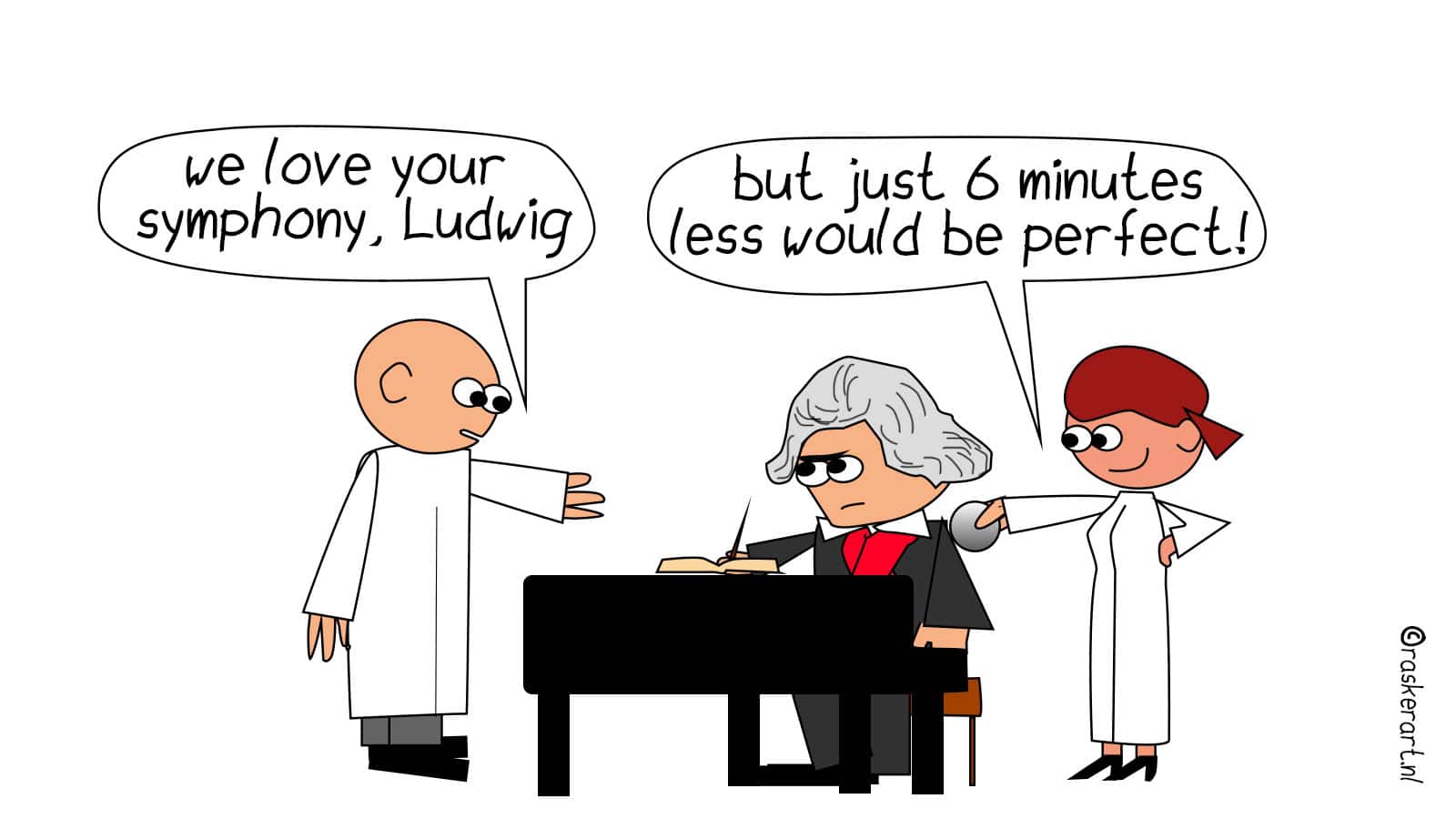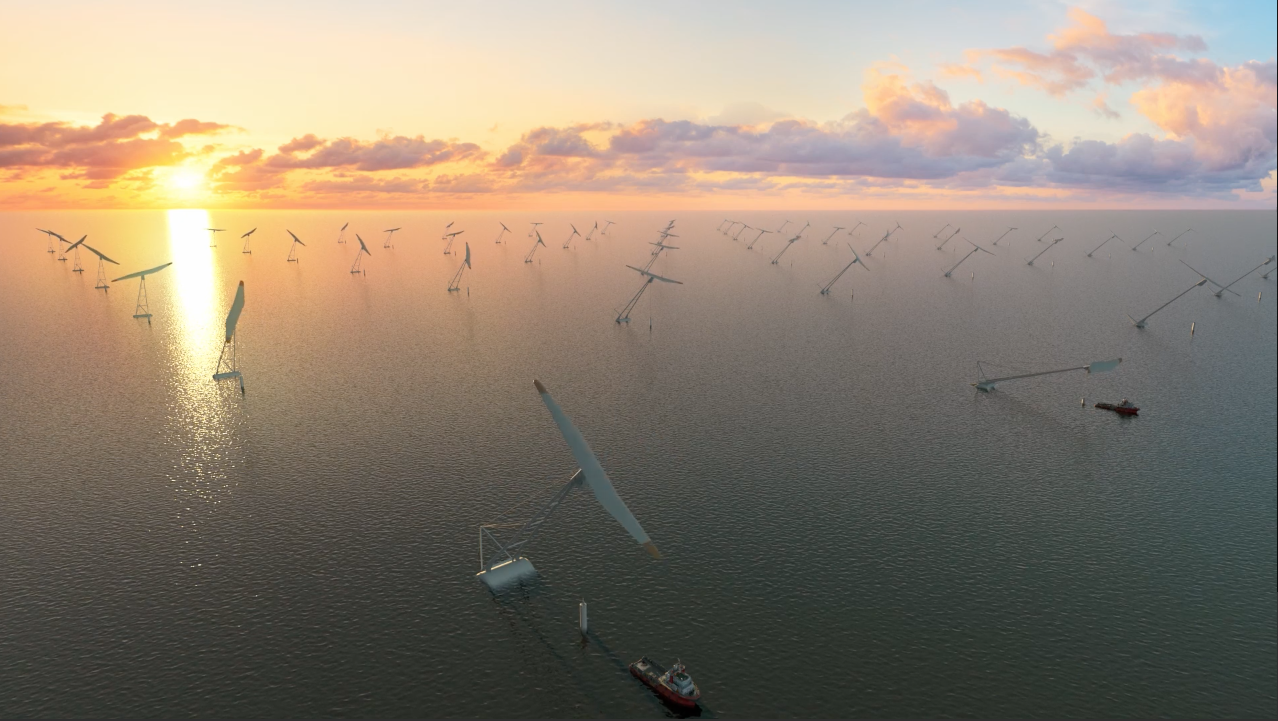
About TouchWind BV
- Founders: Rinus van de Klippe, Mark Goossens, Pim Lucassen
- Founded in: 2018
- Employees: 4
- Money raised: € 2.8 million (RVO subsidy and shareholder equity)
- Ultimate goal: Offshore windmill parks with TouchWind turbines that supply energy at a lower price than fossil fuel-generated energy
TouchWind is developing a wind turbine for offshore installation that is not anchored in the ground with a mast but floats on the sea atop a cylindrical structure. The floating platform which the turbine is mounted on is anchored to the seabed with a chain. The infrastructure for the transport of electricity is also connected to that anchor on the seabed.
Its mast is relatively light and bends downwards when there is not much wind. When the wind picks up strength, the low-pressure area draws the mast with the rotor upwards, causing the turbine to stand upright.

This design has many advantages, says Rikus van de Klippe, the inventor of the technology. The most important advantage is that the wind turbine cannot be blown over during storms. Because of its design, the rotor never catches the full blast of the wind. This is because it is not mounted perpendicularly but instead at an angle on the mast. This causes the mast to be hoisted up when there are strong winds, while the wind catchment area of the rotor becomes smaller as the wind blows harder. Consequently, this ensures that the mast does not run the risk of being blown over.
Rotor does not have to be switched off
That is precisely the current situation with respect to conventional concepts for floating wind turbines, says Van de Klippe. They are liable to fall over in strong winds. The rotor blades (which are mounted parallel to the mast) often have to be switched off because they cannot cope with the wind speeds.
The TouchWind turbine does not have this problem given that its rotor (which is mounted perpendicular to the mast) does not catch the full force of strong winds. As the wind gets stronger, the rotor moves further away from the wind.
The fact that no gigantic, extremely heavy mast has to be driven into the seabed makes the offshore installation of TouchWind turbines relatively straightforward. Installation takes at least two to three days for conventional wind turbines currently at sea. When conventional turbines are installed in the deep sea, they need a large and heavy-duty platform. Installations are more complicated in these cases.
The TouchWind turbine is cheaper because less heavy equipment is required and the rotor is in one piece instead of being made up of individually driven rotor blades. But also because installation takes considerably less time and requires fewer large and expensive boats.
Mast swings down easily
Van der Klippe believes that the maintenance of the TouchWind turbine is safer because the mast can be easily swung down. That then makes it possible to check the turbine on a maintenance ship. When carrying out major maintenance, the entire installation can be detached from its anchorage on the seabed and sailed back to shore if necessary.
This is not the only advantage offered by the mobility of the TouchWind turbine. You can also move them around if you want. “Suppose that at some point newer wind turbines are available, then you can install the old ones off the coast of countries that do not have that much money. They can then buy them second-hand.” A viable option, because the average wind turbine should last about 25 years.
2020 is a crucial year for Van de Klippe. The company, where he works together with eight colleagues, received a subsidy of almost €3 million from the Dutch RVO in January this year. The aim is to further develop the TouchWind turbine and make a prototype that can be tested on water. TouchWind is working together with the Maritime Research Institute Netherlands (MARIN), the Dutch Delft University of Technology (TU Delft), rotor blade manufacturer We4Ce, powertrain technology specialist Nidec, and VDL for the manufacture of the mast and the floating platform.
Plan originally dates back to the 1970s
The completion of the development of the TouchWind turbine is a milestone for Van de Klippe. It potentially opens the way for a whole raft of new inventions. Van de Klippe studied aeronautical engineering at TU Delft in the 1970s. Faced with the oil crisis, he thought there should be better ways to develop energy. He then came up with a wind turbine that also functioned like a kite. The reasoning behind it was that “you have to get energy where it is predominantly available,” he says. “So, that would be high up in the sky.” He put forward the idea. But it did not catch on. “The premise that the windmill would fly through the sky attached to ropes did not seem to have broad appeal.”
There was no market for wind turbine development back then. Over the years, he worked on his invention whenever he could. “But I also had to make a living, I had a family and children.”
He has worked for wind turbine companies twice and for a large part of his time in education also as a maths and physics teacher at the Vrije School in the Dutch city of Eindhoven.
His ex-students want a huge boat party
Van de Klippe is now 66 years old. He has always had to scrimp and save. Money was always a bit of a concern so he was unable to spend all his time on his true calling. Now that he is able to do this, what with the grant money he now earns from the Netherlands Enterprise Agency (RVO), he rather ironically almost doesn’t need it anymore.
When asked whether he will have made it financially if the TouchWind turbine concept is fully developed and sold, he answers emphatically with a clear and concise: ‘yes’.
The students from the class he was teaching until recently have asked him to throw a huge party on a boat when he starts making his millions. “They’re hoping I’ll buy a huge boat, haha!!” But money is not the reason why he is doing it. “That doesn’t give me any energy. I get energy from working with our team.” He talks about his friend Pim Lucassen, who recently turned 70. After a long career in engineering, including at Philips, Lucassen now works in close collaboration with Van de Klippe as an interim CEO at TouchWind. “We know what we have to offer each other. We know each other really well.”
Will financial success see the launch of a new company for inventors?
Ideally, Van de Klippe wants TouchWind’s technology to be used as much as possible in the future. However. Lucassen and Van de Klippe realize that that’s not that easy to put into practice. The companies that have invested in conventional wind turbines are not waiting around for the much cheaper and more productive competitor TouchWind. Which is why will seek out a wind turbine manufacturer who is ready and willing to take it on. Such a company must be prepared to write off investments they may have already made, or who does not currently have an active stake in windmills.
Should the millions eventually pour into the hands of Van de Klippe and his partners, they probably would not opt for a luxury life in the Bahamas. “We will keep on inventing things. Right now, there are about thirty, forty ideas on the shelf that we also want to develop.”


